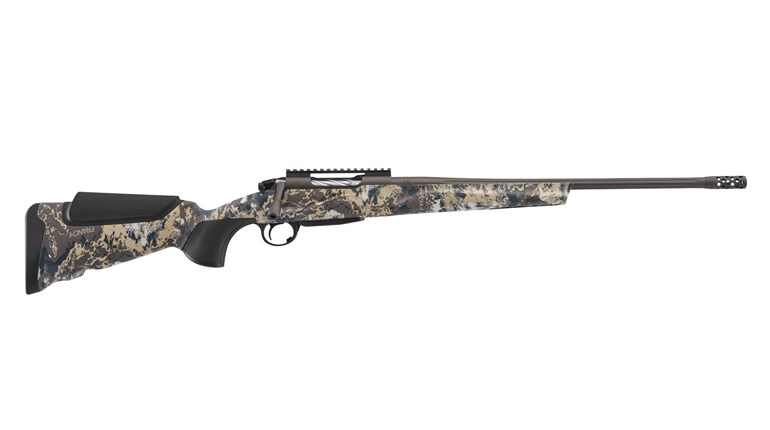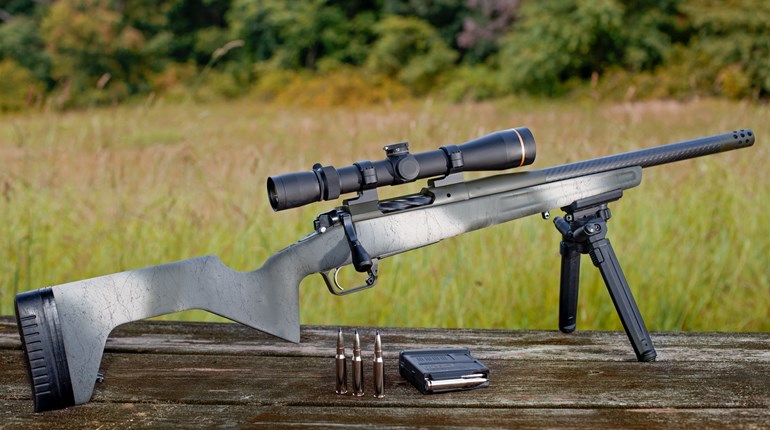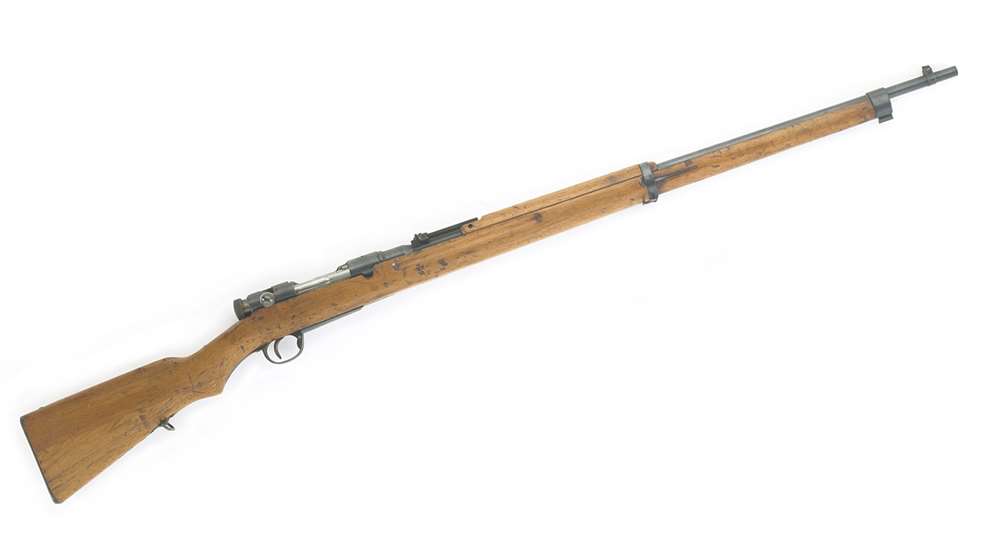
We don’t see many Japanese Arisaka rifles competing at Vintage Military Rifle (VMR) games, yet among the many different cartridges chambered in the many different eligible rifles, the Type 38 Arisaka’s 6.5x50mm could be a premier for two reasons: comparatively low recoil and the availability of fine match grade bullets. So, where are the Arisakas? Their absence from the firing line we can attribute to the rifle itself, which shooters generally categorize with the Italian Carcano and Hungarian Steyr rifles under “Clunky Guns.” Whether or not that may be warranted, perhaps the Arisaka is worth another look.
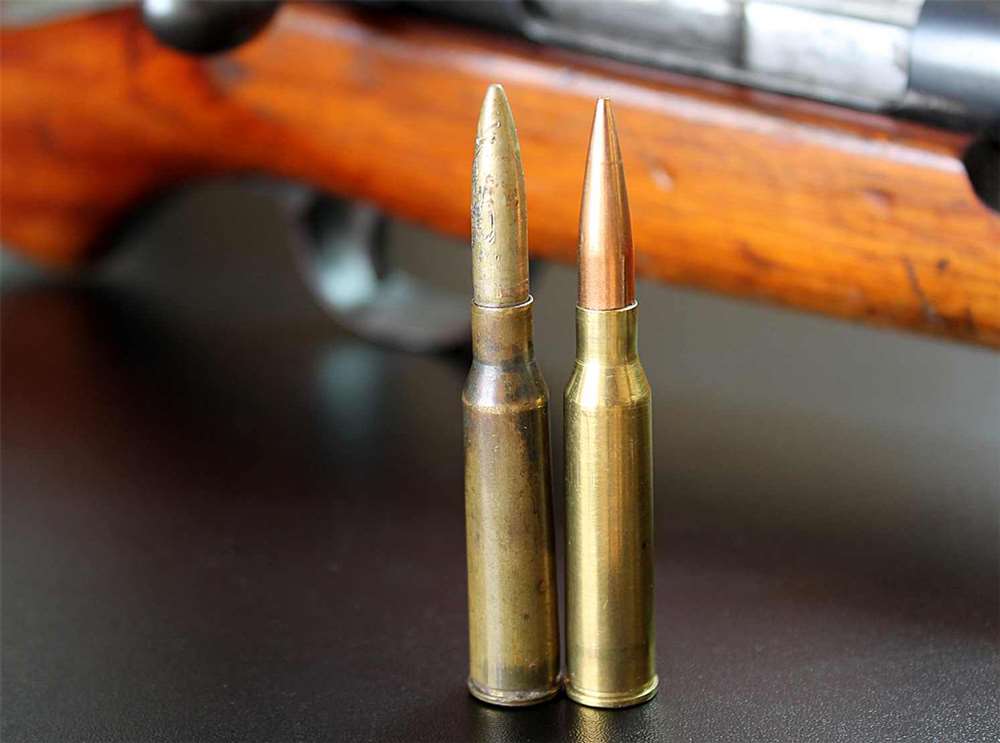
From war to sport
The Japanese fielded two, very similar bolt-action Arisakas during World War II, the Type 38 in 6.5x50mm, and the Type 99 in 7.7x58mm. The former dates back to 1897, while the Type 99 and its bigger cartridge went into service in 1939. At war’s end, both types came to American shooters as confiscated war materiel. The Japanese manufactured Arisaka rifles with the image of a mum, signifying ownership by the Emperor, stamped onto the top of the receiver. On most that we see, the mum is defaced or completely ground away; because the U.S. was more interested in rebuilding Japan as a political ally than punishing it as a beaten enemy. The U.S. agreed to a Japanese request to remove the mum so that the rifles seized as war booty would not dishonor the Emperor by bearing his mark in defeat. Arisakas bearing unaltered mums are generally those picked up from battlefields and brought home by individual servicemen.
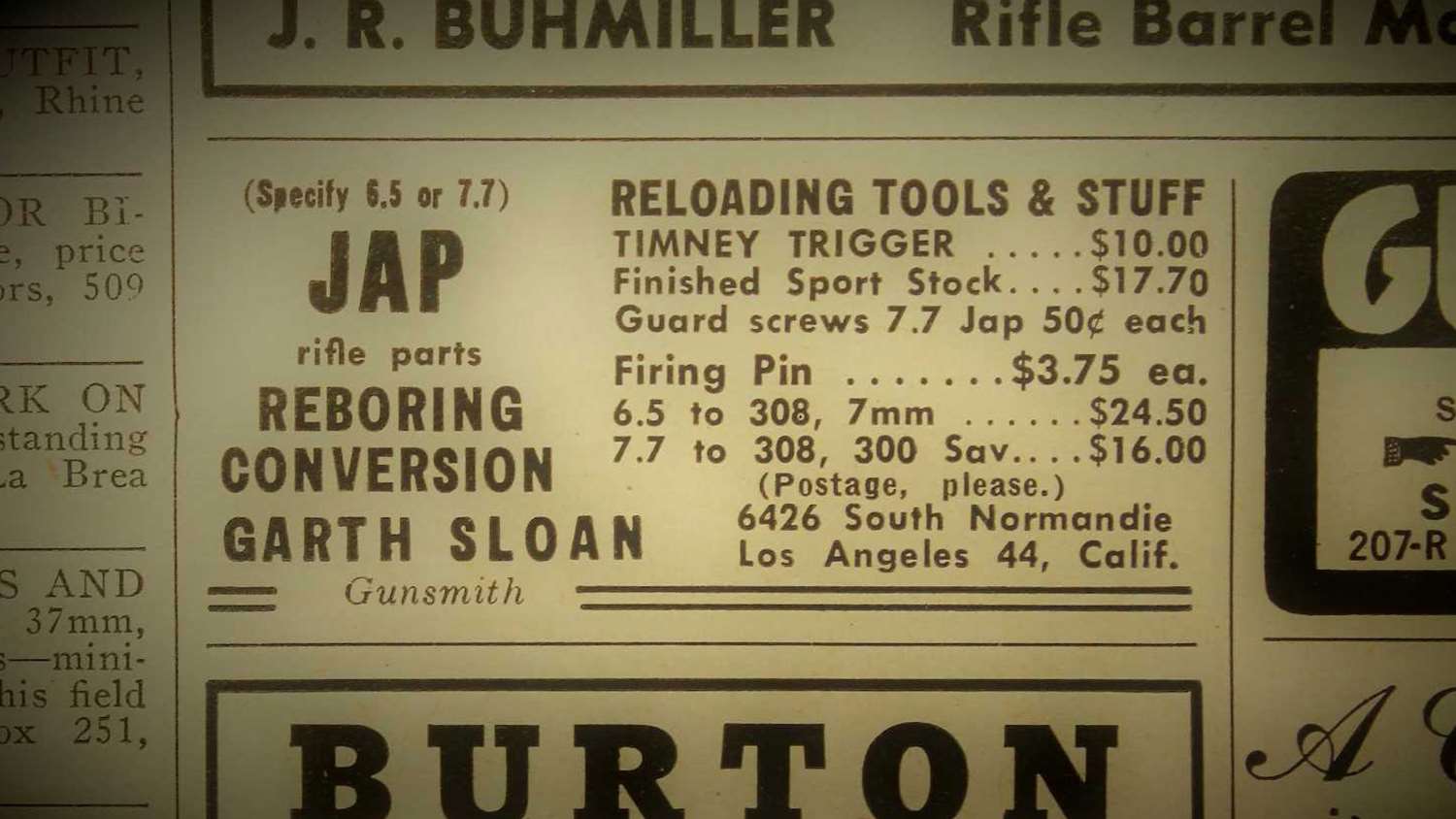
A U.S. cottage industry in converting military bolt guns into hunting rifles quickly sprang up after WWII. Though it focused on Mausers, Springfields and M1917 “Enfields,” the Arisakas, too, were converted into hunters, but never garnered the popularity of the U.S. and European rifles. The cartridges aren’t to blame, as the 7.7x58 performs essentially identically with the .303 British, and the 6.5x50 is suitable for deer-size game. Rather, gunsmiths found the Arisaka’s action, although extremely strong, to be almost completely unsuited for conversion and hunters thought it inelegant and less-than-optimum for hunting, compared to other rifle choices.
Arisaka rifles were the cheapest of the military sporters, and a great many of them show the attention of amateur attempts at gunsmithing. Standard Arisakas still in original uniform and NRA Very Good condition but with defaced mums can be found for around $300-$400; those with intact mums and in NRA Excellent condition typically fetch more. The rifles are historically interesting shooters and, of course, they’re candidates for Civilian Marksmanship Program VMR competition.
Reloading the 6.5x50
Factory 6.5x50 ammunition is out there, but it’s the rare gun shop you’ll walk into and find on the shelf. Online, it runs from about $1.30 to $2.40 per round plus shipping cost. Commercial makers include Hornady, Norma and Precision Cartridge. Purchasing and shooting any of these will provide both instant gratification and once-fired brass for reloading. New brass for handloading is available from Norma and Prvi Partizan.
The “SR” in the cartridge’s arguably most-descriptive designation, 6.5x50SRmm, indicates the case is semi-rimmed, meaning the rim is wider than that on a rimless case (like .308 Win.), but not as wide as on a rimmed case (.30-30). The 6.5x50 headspaces on the shoulder, so the rim is of no special consideration beyond utilizing the proper shell holder, which is Redding #32, Lee #10, RCBS #15, Lyman #5 and Hornady #34. Several companies stock reloading dies without the need to go the custom die route, so there must be plenty of folks still reloading the 6.5x50—a.k.a. 6.5 Arisaka, 6.5x50mm Japanese, 6.5 Japanese and, less commonly, .256 Japanese. Among those named in the shell holder list above, only Lyman doesn’t appear to have the dies on the shelf.
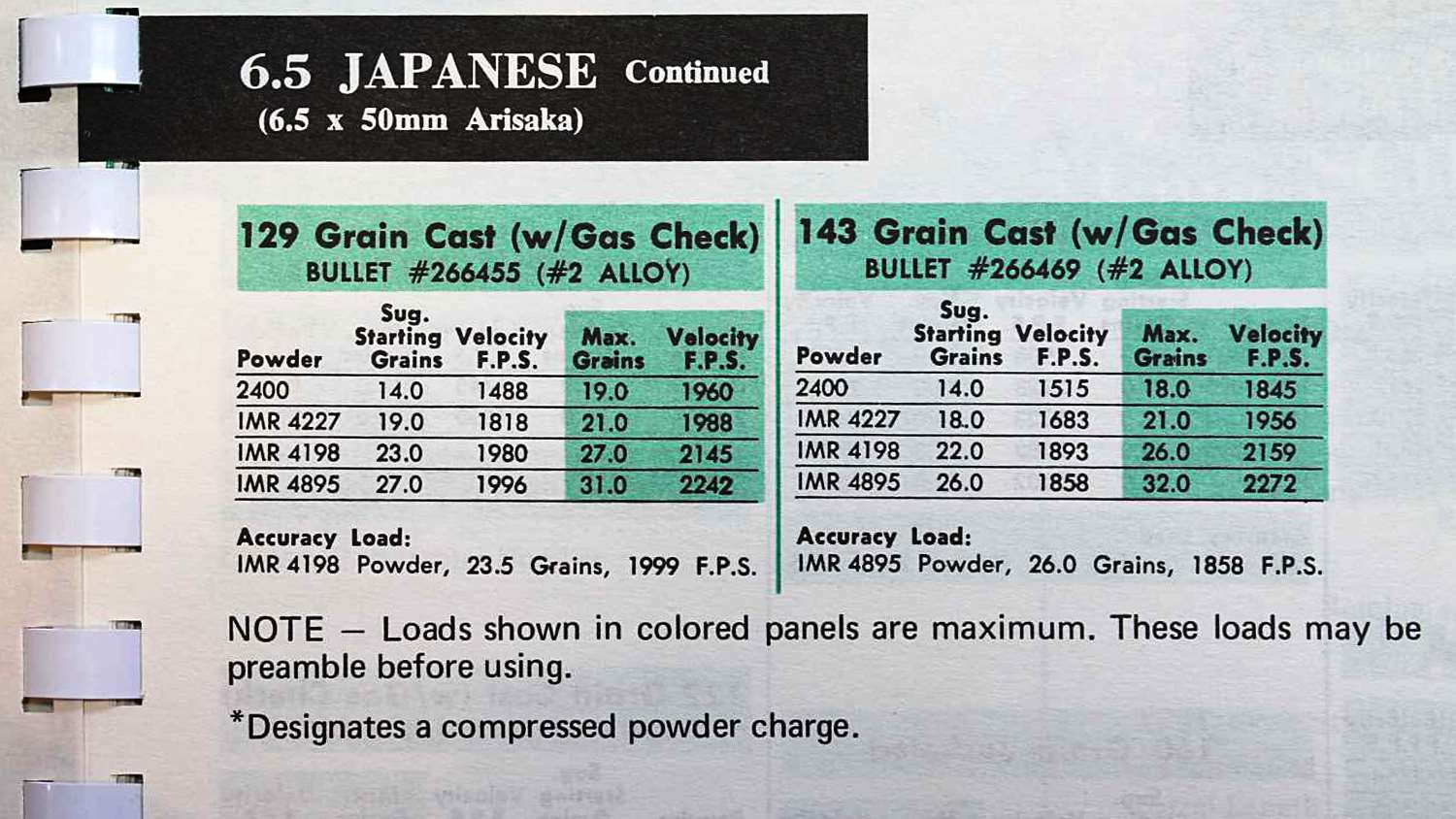
What Lyman does have, however, is load data for cast bullets in its 1970 45th Edition manual, which may be necessary to garner best accuracy in your Arisaka. Most references list the Type 38’s ostensible bore diameter as .256 inch, and groove diameter as .262 inch. Rifle-to-rifle however, Type 38s are apparently inconsistent in groove depth, perhaps more so in the late-war specimens; casting lead bullets and sizing them to fit your specific barrel may shrink groups significantly. Note also that cast bullet velocities are typically quite low—starting below 1500 fps with a 129-grain bullet—which equates to lesser recoil.
Early Type 38s had a 1:7.9 twist rate to stabilize the 6.5x50’s original 162-grain round nose bullet; the twist changed to 1:9 to suit the later 139-grain spitzer bullet. Cartridge overall length (COL) for the 6.5x50 is 2.855 inches. Military rifles tend to be long in the throat, and the Arisaka is no exception. Seating bullets close to the rifling lands usually improves a rifle’s precision (accuracy), but bullets also must not be seated too far out or else the COL will be too long to allow cartridges to feed through the magazine for the rapid fire stages of VMR competition. The best we can do is to seat them out as far as possible that still allows magazine feeding.
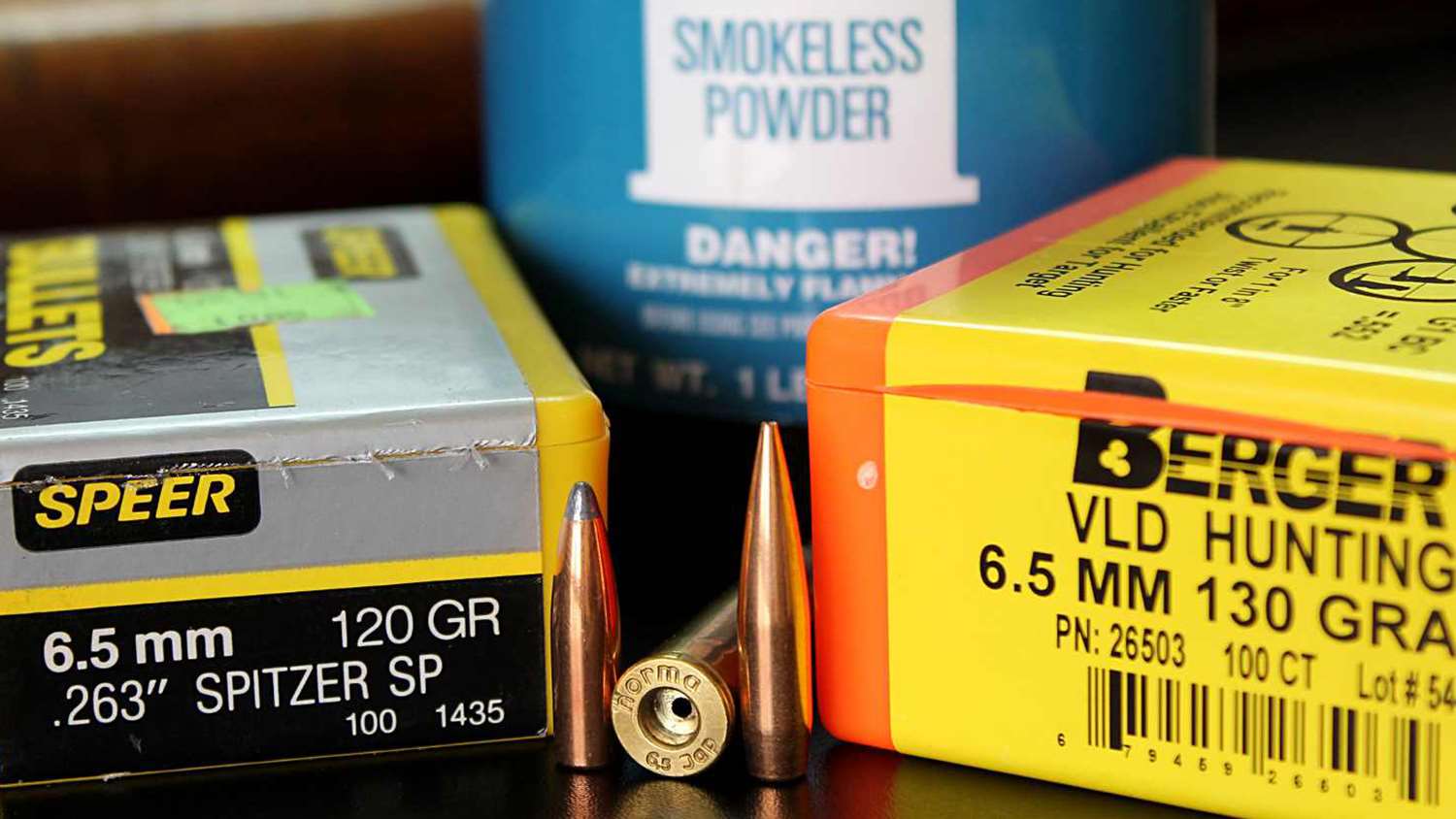
We have a wide selection of 6.5mm bullets available to us. While match grade bullets can tighten groups to their utmost, keep in mind that VMR competition is at 200 or 100 yards, and that loading razor’s edge match grade ammo for an as-issued battle rifle is an exercise in diminishing returns. We don’t need long, heavy, boat tail bullets of exquisite secant ogive at 200 yards. We also don’t need warp speed. Quality jacketed bullets of 120 to 140 grains at 2200 fps to perhaps 2600 are adequate. That said, in my experience match grade ammunition can cut a battle rifle’s group size in half.
Keeping speeds down is what takes advantage of the 6.5x50’s best attribute suggested at the beginning: low recoil. Sierra lists loads for the 6.5x50, and Hodgdon includes it at their free online load center. Appropriate powders run in burn rate from about BLC (2) at the fast end to IMR 4350 or VVN-150 at the slower, according to Sierra. Load density is good with extruded powders; as an example, a maximum charge of 37 grains of IMR 4064 under the 120-grain MatchKing bullet just about reaches the neck-shoulder junction and launches bullets at around 2600 fps. Thirty-seven grains of H4831SC pushes 130-grain Berger VLD Hunting bullets over a chronograph at 2200 fps; upping charges to 40 grains ups speeds to 2500 fps with better load density and no overpressure signs. If we’re looking for maximum velocities, H4831SC is probably too slow for the comparatively limited case capacity; but the goal isn’t velocity, its precision, and we sometimes find it with a load density close to 100 percent. Powders considered slow for case size tend to fill the case before reaching max velocities, so those may be the choice for the Arisaka’s load development.
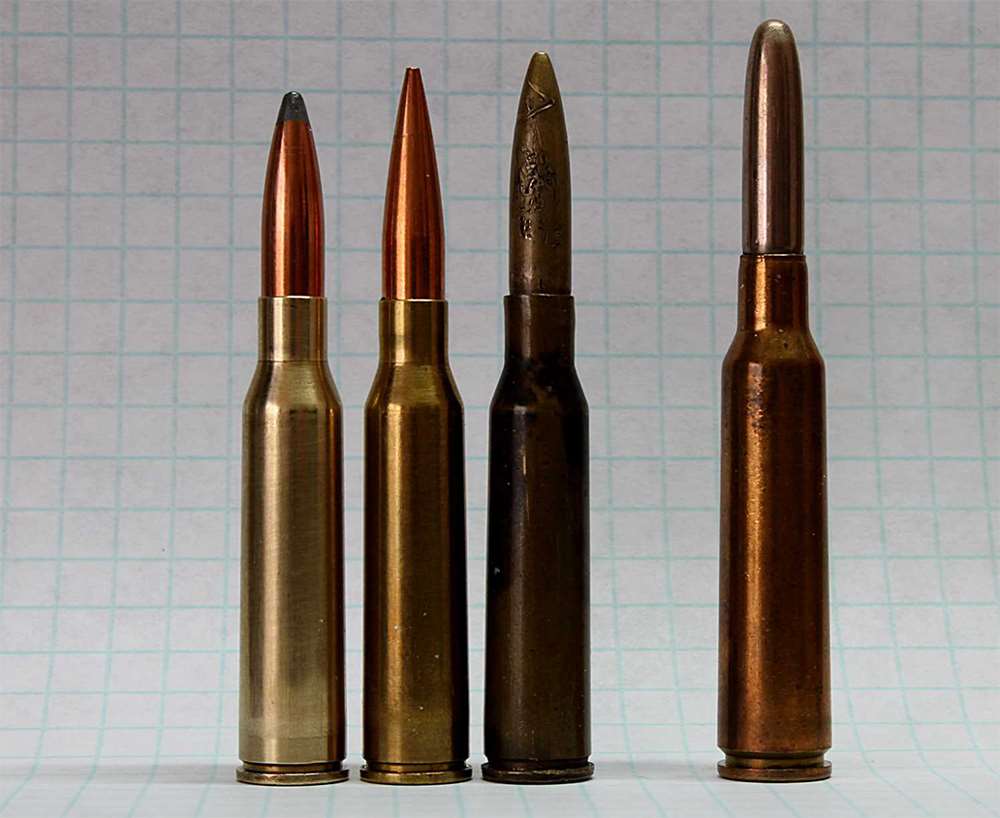
Downsides
In addition to downloading the cartridge by handloading, the Type 38 rifle’s military weight further reduces perceived recoil of the already comparatively mild cartridge. The wood stocks tend to be as inelegant as the Arisaka action itself, but that’s only skin deep. More serious, Type 38s made late in the war may sport slightly oversized chambers, and fired brass may come out bulged. Repeatedly resizing and firing the same brass in the chamber may eventually cause a case to rupture. The safest cure for this ailment is to rebarrel, which is competition legal; so long as the chambering and the barrel’s outside contour remain original.
Especially for older shooters who have trouble seeing barrel mounted open sights, competitive accuracy with the Arisaka may be a frustrating pursuit. Rules do permit modifying the front and rear sights’ tiny, inverted V “barleycorn” sight picture into a larger post-in-notch presentation, which may help.
The Type 38 Arisaka’s trigger is military two-stage. After taking up the initial slack, mine cleanly breaks at a respectable five pounds without creep or overtravel. Apparently, there’s not much to be safely done to lighten the Type 38’s trigger pull to competition-legal 3.5 pounds while still retaining original parts and full reliability, beyond careful polishing of mating surfaces.
Do you know someone sensitive to recoil who might otherwise enjoy VMR competition? The Type 38 Arisaka and its 6.5x50 cartridge may be the open door waiting for them. A little bit of competition-legal modification to the rifle (or perhaps none) complimenting the comparatively mild recoil of the cartridge may bring another throwback rifle—and a new competitor—to the line.














